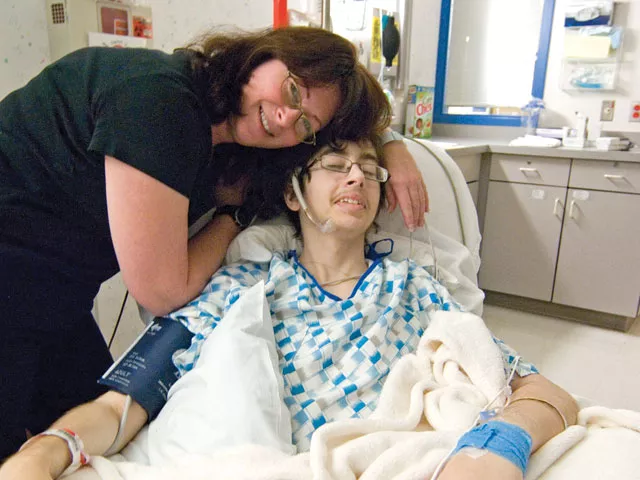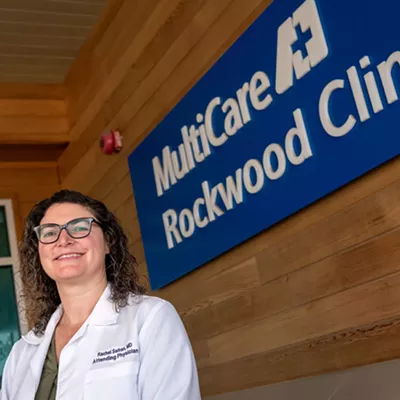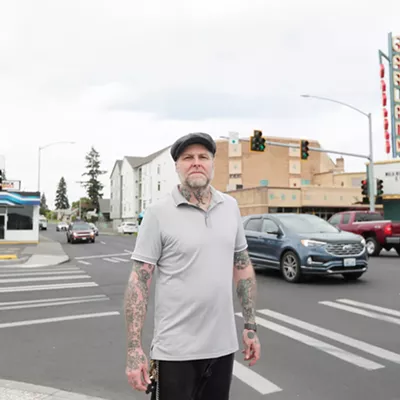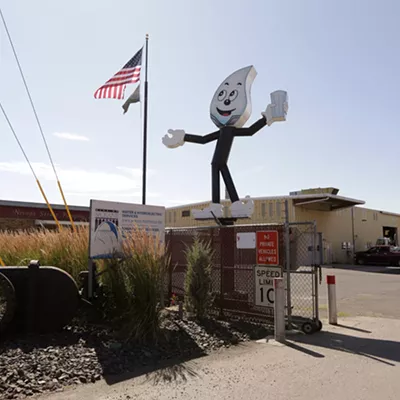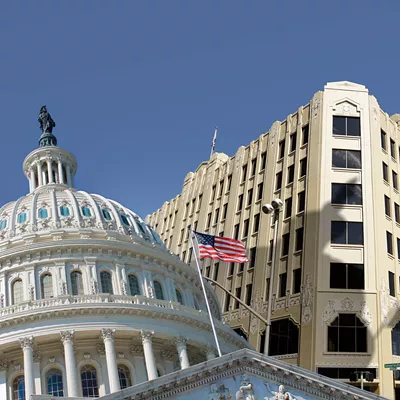Spines shouldn’t bend that way.
Spines should be straight, not crooked and swooped. Certainly not at a 97-degree angle, like George Webb’s.
“His spine took a sharp corner to his right armpit,” his mother Donna says. “His spine wrapped right around the heart. It was crushing his right lung.”
She asks him what he’s going to do after graduation. He says, if he lives, he’ll think about it.
“His pain is so high, he can’t function,” Donna says. She’s in tears. He’s only 18. But today, George is resting at Spokane Shiners Hospital. He smiles weakly. His surgery was a success. His life, thanks to Shriners’ surgeons, had been saved.
THE HOSPITAL
Shriners is exceptional — it’s the only hospital within 250 miles specializing in pediatric orthopedic care. This year, spokeswoman Sally Mildren says, there’s been a 40-percent increase in spinal surgeries.
“Last year, we did 642 surgeries,” Mildren says. “This year, we’re going to be closer to 800.” And thanks to Shriners’ charitable business model, every one of those surgeries has been free.
But it’s not easy being free. Last October’s stock market swan dive took $3 billion of the Shriners’ endowment with it. The Shriners considered closing six hospitals — including the one in Spokane. After the community rushed to save Spokane’s Shriners, the national organization voted, for now, to keep the Spokane hospital open.
Financial problems remain. Soon, Mildren says, Shriners will begin to bill third-party insurance providers. Shriners will still cover any co-pay and will still pay the full bill for those without insurance. For the foreseeable future, the Spokane chapter of Shriners Hospital for Children will continue to operate, free of charge, on patients like George.
THE PATIENT
Five years ago, George, then 13 and living in Canada, learned that he had a brain tumor. Spinal radiation removed it, but either the tumor or treatment had a nasty side effect: George’s spine began twisting.
It got increasingly worse — every six months, his spine bent 15 degrees further. At 65 degrees, his mother knew he desperately needed surgery.
The good news: With Canada’s publicly funded health care system, cost wouldn’t be an issue. The bad news: There was only one surgeon in all of British Columbia who could do the surgery — and he only worked eight surgical days a month. The wait to operate on his spine would be two years.
“I got to the point of despair,” Donna says. “He’s not going to make it to May 2010.”
But the driver of a Shriners bus — the bus that she and George rode to Vancouver, B.C. — offered hope. The Gizeh Shrine Temple in Vancouver, he said, could help sponsor them. Soon, hopefully soon, a Shriners hospital down in Spokane, Wash., would be able fi x his spine.
Five months after their application, doctors rolled George into a Shriners operating room. “In my world, that’s not a wait,” Donna says. “That’s darn near immediate.”
Over nine and a half hours, orthopedic surgeon Bryan Tompkins and Chief of Staff Paul Caskey stand over George’s back. They have to be careful. Stretch or sever or pinch a nerve, and George could lose his ability to walk.
They go in through George’s right rib cage, remove fi ve vertebrate disks, and then turn George over on his back. Slowly, they pull his spine straighter. To prevent the spine from wandering again, they insert titanium metal rods, hooks and screws. Over time, the bone will fuse to the metal pieces.
When George wakes up, his back has gone from a 97-degree angle to a 30-degree angle.
He can breathe easy again, both figuratively and literally.
“Up until now, it’s just been trying to get through the day coping with the pain,” Donna says. “I think that was the moment for George when he saw a future finally.”
On a 1-to-10 scale, Donna says, George had been at a “10” level of pain for years. Now, he said, he was at a “one.”
“I said, ‘How do you feel, buddy?’ He said, ‘I feel excited,’” Donna says. “Which is a pretty strange word.”
THE DOCTORS
The doctors at Shriners don’t get paid like doctors elsewhere. But there are other benefits.
“You don’t have to worry about billing and collecting.
No decision here is made because of economics,” anesthesiologist Stephen Carlson says. “It’s one of the few hospitals where everybody is sort of in concert in doing the right thing for the patient.”
Shriners can do procedures far too expensive for most insurance companies.
“The more donations we have, the more kids we can help,” Tompkins says. “Right now, we have to limit the procedures we can do because we don’t have enough money to help all the kids on our wait list.”
A single titanium screw costs $600. The hardware for a full operation runs between $8,000 and $20,000. The surgeons are ready and willing to operate — but the cost is too high.
More money means more kids like George can once again go back to playing football, back to skiing, back to living life without a grimace.
“I think I’m going to challenge him to a game of cribbage this afternoon,” Donna says. “I’ll probably get soundly whipped.” To donate to Shriners Hospital, visit support.shrinershospitals.org. You can also donate at many area locations, including Spokane City Hall, Greater Spokane Inc., the Masonic Temple, the downtown Holiday Inn and the Shriners Hospital itself.

